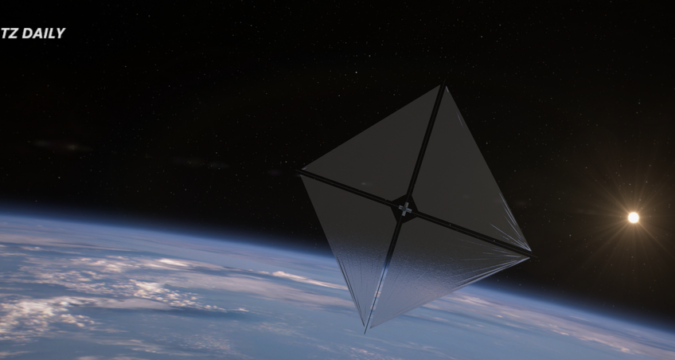
NASA is set to launch the Advanced Composite Solar Sail System, a next-generation solar sail technology, on Rocket Lab’s Electron rocket in April. This technology, which uses sunlight pressure for propulsion, could enable longer, lower-cost missions and expand our understanding of the sun and solar system. Solar sails, which have been limited by their boom structure, could revolutionize the sailing game for the future. The launch is expected to advance space travel and expand our understanding of the sun and solar system.
The Advanced Composite Solar Sail System demonstration uses a 12U CubeSat to test a new composite boom made from flexible polymer and carbon fiber materials. The mission aims to demonstrate boom deployment and prove sail performance. The solar sail can adjust its orbit by angling, and the team plans to test maneuvers to change the spacecraft’s orbit and gather data for future missions.
NASA’s Langley Research Center has developed a tube-shaped solar sail with lightweight, stable booms that can fold down compactly, offering advantages of composite materials like less bending and flexing during temperature changes, unlike traditional heavy and bulky booms.
NASA’s Ames Research Center is set to launch a solar sail into space, measuring 860 square feet. The solar sail, which spans the diagonals of the polymer sail, will be visible from Earth if the lighting conditions are right. The reflecting material on the sail will have the same brightness as the brightest star in the night sky, Sirius. The spacecraft’s deployable booms can roll up into a shape that fits in a hand, with the hope that the new technologies verified will inspire others to use them in new ways.
Enabling Future Solar Sails
NASA’s Small Spacecraft Technology program is launching a solar sail with lightweight composite booms, potentially supporting sails as large as 5,400 square feet (500 square meters) and 21,500 square feet (2,000 square meters). The technology could support sails of up to half a soccer field. The Sun’s unlimited fuel source allows for larger sails, demonstrating a system that uses the abundant resource for exploration and science rather than launching massive fuel tanks for future missions.
Solar sails, powered by the sun, can provide constant thrust for missions requiring unique vantage points, such as understanding the sun’s impact on Earth. They are also ideal for early warning systems monitoring solar weather, as solar storms and coronal mass ejections can cause significant damage to Earth. Composite booms, with their lightweight design and compact packing system, could be used for habitat construction on the Moon and Mars, as well as for communication relays for astronauts exploring the lunar surface. NASA Ames project manager Rudy Aquilina believes this technology will inspire future missions.
NASA Langley designs and builds the solar sail system, funded by NASA’s Small Spacecraft Technology program. Rocket Lab USA provides launch services, while NanoAvionics provides the spacecraft bus.